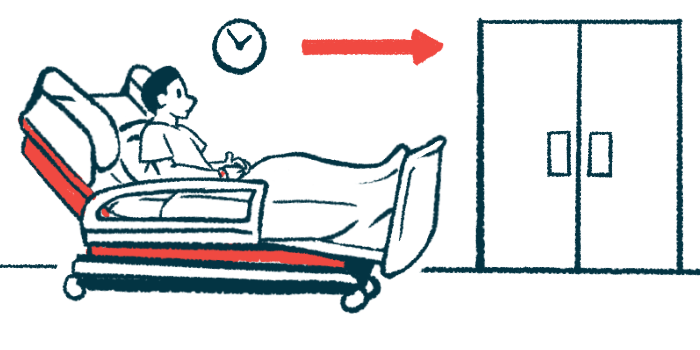Adrenal function recovery seen in most Cushing’s cases after surgery
Study: Younger age at diagnosis linked to faster adrenal recovery
Written by |

Most people with Cushing’s syndrome see their adrenal function recover after first-line surgery to remove disease-causing tumors, even though it may take several months or years, according to a study that also showed a younger age at diagnosis was linked to faster adrenal recovery.
“The recovery rate of adrenal function after successful surgery as first-line treatment in patients with Cushing’s syndrome is high,” the researchers wrote. “In case of early recovery of adrenal function, clinicians should be aware of a possible recurrence of Cushing’s disease.” The study, “High recovery rate of adrenal function after successful surgical treatment of Cushing’s syndrome,” was published in Endocrine Connections.
Cushing’s syndrome refers to a group of diseases caused by chronic exposure to excess levels of the hormone cortisol and that lead to symptoms that may include weight gain, fat accumulation around the abdomen, face, and the back of the neck and shoulder blades, changes in skin and body hair, emotional disturbances, and fatigue.
Cushing’s disease, one of its most common forms, is caused by tumors in the pituitary gland that produce and release high levels of a signaling molecule called adrenocorticotropic hormone (ACTH), stimulating the adrenal glands on top of the kidneys to produce too much cortisol. Excess cortisol production can also be caused by tumors in the adrenal glands, as well as by ACTH-producing tumors elsewhere in the body, known as ectopic Cushing’s syndrome.
The first-line treatment for Cushing’s is to remove the tumors that cause the disease. When it’s successful, the procedure is often followed by adrenal insufficiency, when the adrenal glands become unable to produce sufficient amounts of certain hormones, including cortisol.
It can take time for the adrenal glands to fully regain the ability to produce cortisol. What factors influence the recovery rate of adrenal function after surgery for the different forms of Cushing’s syndrome aren’t entirely clear, leading researchers in the Netherlands to review the records of 174 adult and pediatric patients who were in remission and developed adrenal insufficiency after first-line surgery. Among them, 135 had Cushing’s disease, 35 had adrenal Cushing’s, and four had ectopic Cushing’s.
Restoring adrenal function after surgery
For Cushing’s disease patients, adrenal function recovery rates were 37.8% after a year, 70.1% after two years, and 81.1% after five years, with an overall median recovery time of 13.9 months. In the adrenal Cushing’s group, adrenal function recovery was seen in 49.3% of the patients after a year, in 86.9% after two years, and in 91.3% after five years, with an overall recovery median of 12.1 months.
“Patients with adrenal [Cushing’s] had higher recovery rates than patients with [Cushing’s disease],” the researchers wrote. “This can be explained by the fact that the cortisol excess is generally less severe in adrenal [Cushing’s].”
The time to adrenal function recovery was known in three of the four patients with ectopic Cushing’s and ranged from 5.7 to 14.5 months.
In additional analyses, all patients were divided into three groups based on their age at the time of diagnosis (0-35, 36-55, and 56-100) and showed the median time to recovery was shorter in the youngest age group over the oldest (11.2 vs. 17.6 months). Consistent with these findings, the probability of adrenal insufficiency recovery after surgery was highest in the youngest patients.
Cushing’s symptoms and high cortisol levels reappeared in 17.8% of Cushing’s disease patients. The median time to adrenal function recovery was shorter for those with recurrent disease than in those without (9.9 vs. 14.4 months). Likewise, the probability of recovery was higher in those who didn’t have a recurrence. The researchers called that finding “striking” and suggested that if adrenal function recovers early, clinicians should be aware of a possible Cushing’s disease recurrence.
In a subgroup analysis of Cushing’s disease patients who had pituitary deficiencies after surgery, the median time to adrenal function recovery was longer in those who had a deficiency than in those didn’t (15.9 vs. 13.4 months). Accordingly, the probability of recovery was lower in those with one or more pituitary deficiencies than in those in whom pituitary function wasn’t affected after surgery.
“Patients who undergo pituitary surgery are at risk of developing new pituitary hormone deficiencies … due to permanent structural damage to the pituitary gland,” the researchers wrote. “Our finding that patients with additional pituitary deficiencies after surgery for [Cushing’s disease] had lower recovery rates of adrenal function supports this hypothesis.”
Across all the Cushing’s syndrome patients, the median time to adrenal recovery was similar between those who’d been treated with cortisol-lowering therapy before surgery and those who hadn’t (14.1 vs. 13.5 months).
“Our study shows that the large majority of patients with [Cushing’s syndrome] recover their adrenal function after first-line surgical treatment, even though the time to recovery may take several months to years,” the researchers wrote. “Future studies should establish the optimal postoperative management for [Cushing’s syndrome] to improve the chance for success of recovery of adrenal function.”






